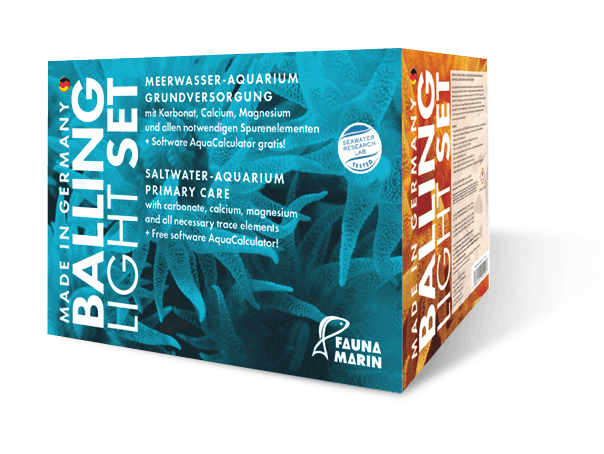Zinc
Zinc is a component and cofactor of many enzymes that play an important role in the material cycles and functional biological processes in biofilms and coral tissue. Zinc is particularly important for the formation of healthy biofilms.
What’s that:
Zinc is an important element for corals and aquarium biology. The need for zinc is particularly high when bacteria are employed and artificial decoration materials are used.
Problems:
Too low zinc values lead to in growth problems, corals tend to shift and are sensitive to light. The nutrient cycles are disturbed, the decomposition of nitrate and PO₄³⁻ is significantly reduced.
Measures:
Partial water change, control of additives, filtration via zeolite, dosing of bacteria
Indicator species:
increasing nutrient concentrations, partial brightening of corals, fading of blue and violet colours, dull colours, no shine
Value too high:
Reduction of dosage, partial water change, partial exchange of substrate, filtration via Powerphos, Phos 0.04, zeolite and activated carbon, dosage Bacto Therapy.
Value too low:
Dosage via Elementals Trace Zn, Balling Trace 1 und 2, Color Elements blue and green, Organic.
| Variety | Dynamic Elements |
|---|---|
| Benefit | Metal |
| Default value | 2-5 µg/l (0,26 US.liq.gal.) |
| Skill Level | green |
| Source | salt, supply systems, trace element mixtures, feed, corrosion |
| Available | Elementals Trace Zn, Balling Light System, Feed, Color Elements |
| Importance 1–6 | 6 |
| Detection quality | safe |
| Relation values | Dynamic Elements |

Balling Light:
In the Balling Light System, a basic dosing is fed to the aquarium via Trace 1 and Trace 2. In case of high consumption it may be necessary to add zinc individually via a single dosing unit.
Zinc, like copper, is an essential element and a key element in enzymes that regulate skeletal growth and the growth control of coral skeletons. Low concentrations of zinc interfere with coral growth and thus also with the energy conversion in reef aquaria. A too low zinc concentration therefore also results in poor nutrient degradation.
Zinc plays an important role, especially in strongly lit aquaria. The regulation of oxygen is an important process in coral physiology, as it protects the coral from excessive radiation energy. Especially in LED-lit aquaria, the correct element supply is important. Not every LED is basically suitable for a reef tank, and in many tanks there is “shifting” of corals, the fading of coral tissue in light-exposed areas. In this case, the zooxanthellae are expelled or relocated within the coral tissue. The correct adjustment of the zinc concentration has a preventive effect.
Zinc is also necessary for the formation of colour pigment proteins, and consequently a good colouring of corals is not possible without zinc. This also includes the formation of fluorescent protein platelets that help corals protecting themselves from too much light and also convert spectral components of light rays to obtain more energy from weak lighting in dim areas. Both the fluorescence and the striking colour design depend on a correctly adjusted zinc value.
The maximum zinc concentration depends on the other Dynamic Elements. If nickel, vanadium, molybdenum and copper are significantly reduced, the zinc concentration must not exceed 10 µg/l (0,26 US.liq.gal.). A too high zinc value is mostly caused by the input via fish feed. But it can also be caused by corrosion. The fittings of aquarium cabinets are often galvanized and corrode in time. The long-term effect of insufficiently adjusted zinc and bromine is particularly fatal. Both elements inhibit/reduce the growth of boring algae and cyanobacteria within the coral skeletons and thus keep the corals healthy.
Tip:
Zinc often enters the tank in high doses via artemia or flake food. In many salts and supplies zinc is not properly considered and is available in too small quantities. As a dynamic element, the relations to the other values should be set appropriately. The consumption can be very individual and it makes sense to check the value regularly.